The most poisonous plants in the world

Nature is always the chance to stumble upon a poisonous plant. And if adults are likely to just pass by, the curious children who want everything to taste, may be affected.
Reminder: many very dangerous species of plants grown as an ornamental and can be seen not only in the forest, but also in the windows and beds. Therefore, the city is also worth to be alert.
Buttercup
Ranunculus
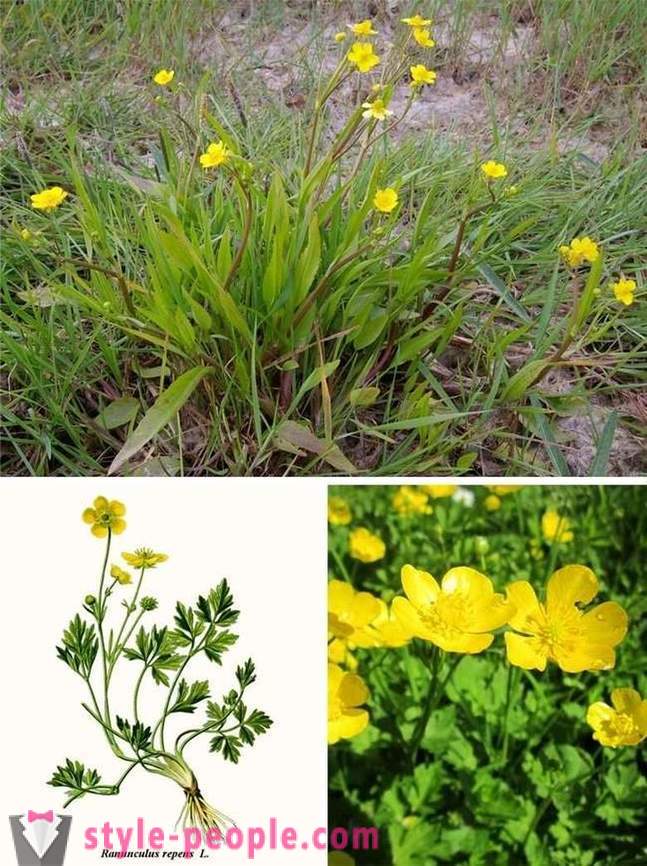
Where found: In the temperate zone of the northern hemisphere; It prefers damp places, swamps.
There are several species of buttercup, many of them are poisonous.
What is dangerous: Contains caustic sap that can leave the skin burns. After contact with mucous it provokes coughing and laryngeal spasms. If the juice gets into the eyes, it can cause temporary blindness.
Landmarks toxic
Cicuta virosa
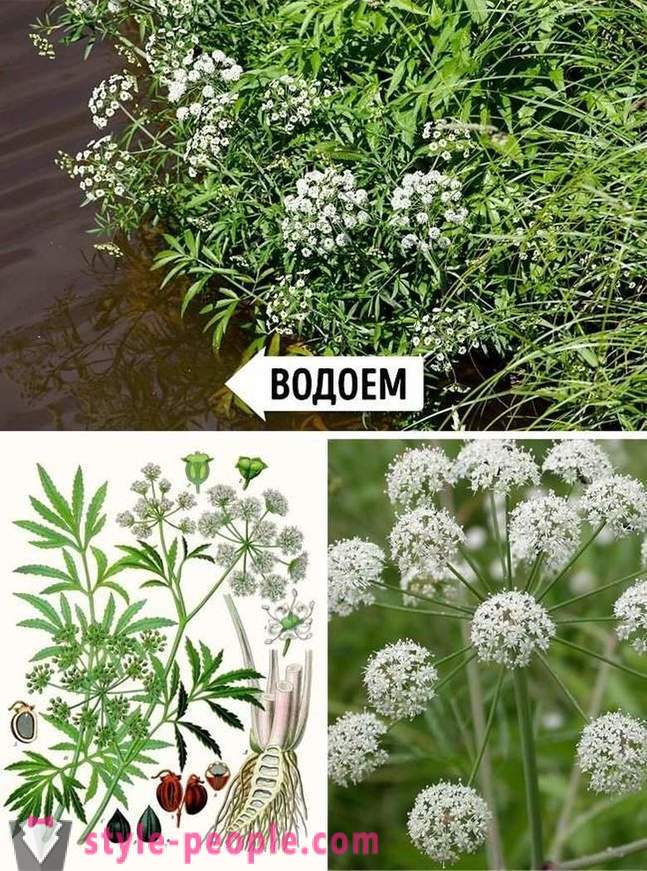
Where found: In Europe, Asia and North America. It grows in very wet places, swamps and riverbanks.
Deceptively it smells like carrots, but this is one of the most poisonous plants in the world. To distinguish it from the dozens of other kinds of umbrella can only be a specialist in botany. Better to just tear the plants, similar to the milestones and growing in damp places.
The danger: If poisoning occur vomiting, convulsions, depression of cardiac activity, death can occur. Total 100-200 g rhizome milestone easily kill a cow.
Sambucus
Sambucus
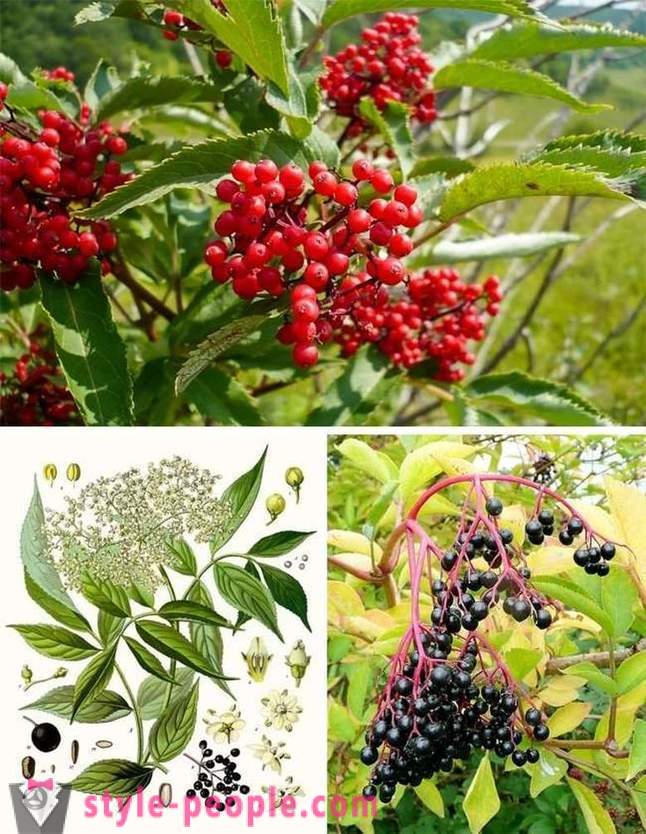
Where found: temperate zone of the northern hemisphere, Australia.
The most common representatives - red and black elderberry. All parts of the plant are poisonous, and if you just touched the elder, it is better to wash your hands. Interestingly, the black berries are completely safe in the matured form of them make drinks and cakes. The danger: Provokes a headache, weakness, abdominal pain, and sometimes seizures. Possible heart failure and respiratory arrest.
Oleander
Nerium

Where found: In tropical and subtropical regions. Used in landscape design, all over the world it is grown as a flower room.
Truly insidious plant that attracts with its pleasant aroma and beautiful pink or white flowers.
What is dangerous: It contains cardiac glycosides, which may change heart rate, cause vomiting, headache, weakness and even death. Legend has it that Napoleon's soldiers unknowingly made a fire of twigs of oleander and fried meat on it. In the morning the soldiers did not wake up.
An aconite, or Fighter
Aconitum
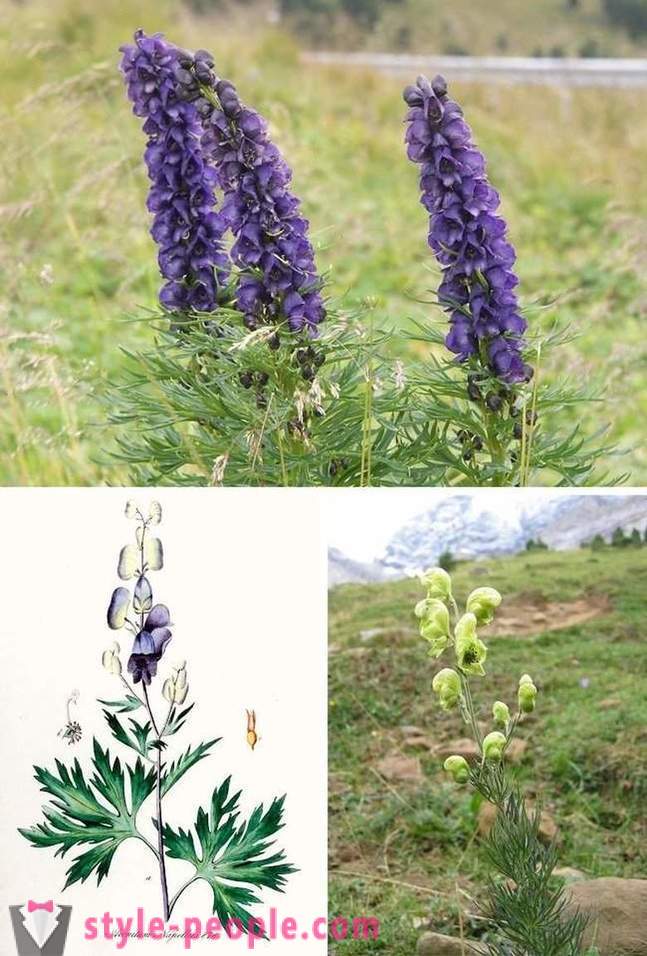
Where found: In Europe, Asia and North America. Because of the beautiful purple, blue and yellow color it is grown in the flowerbeds. It is a high and significant plant.
In the ancient world it was used for poisoning arrows. Even bees can be poisoned if gain the honey with aconite. By the way, delphinium - a close relative, and it is also poisonous.
What is dangerous: very poisonous plant. It causes irregular heartbeat, numbness of the face, hands and feet, darkening of the eyes, and death. Juice penetrates even through the skin.
Datura ordinary
Datura stramonium

Where found: In North and Central America, Europe, the southern regions of Russia.
Datura resembles a potato or tomato, which is not surprising, because it is a close relative. This inconspicuous plant with spiky fruits-boxes with black seeds inside. Its white flowers emit a heady fragrance. What is dangerous: It contains alkaloids that cause heart palpitations, disorientation and delirium. In severe cases, coma or death is possible. Shamans of many people used this plant in their rituals.
Hogweed
Heracleum
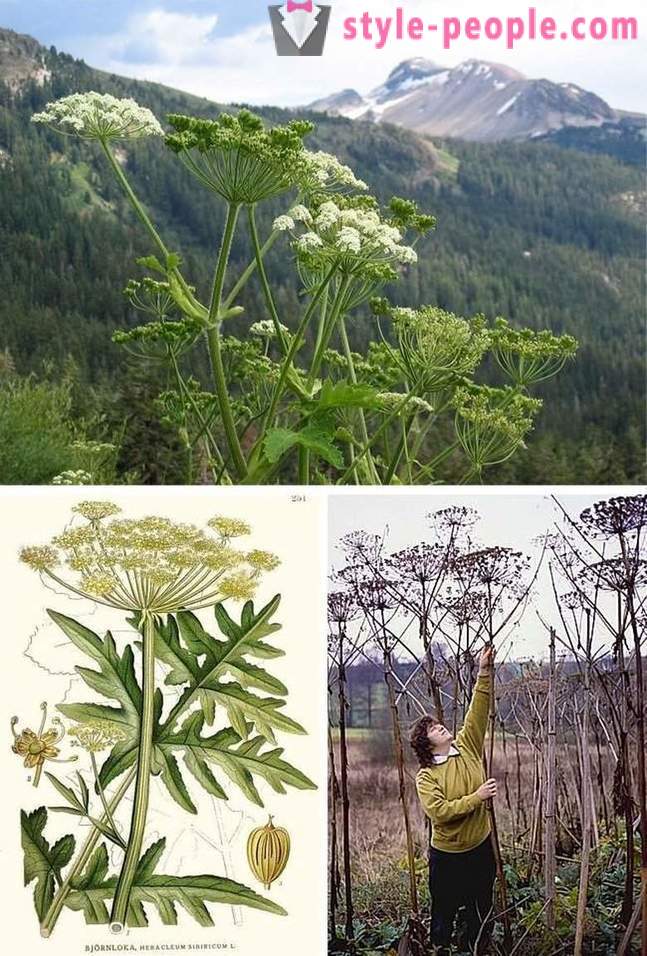
Where found: In the temperate regions of Eurasia, one species exists in the United States.
Just a giant among umbrella that looks quite impressive, but it is better not to be photographed with him.
What is dangerous: Some species contain furanocoumarins that under the action of sunlight cause painful burns. Therefore, if the hogweed sap gets on your hands, wash it and keep it away from the sun's rays about two days.
Euphorbia
Euphorbia
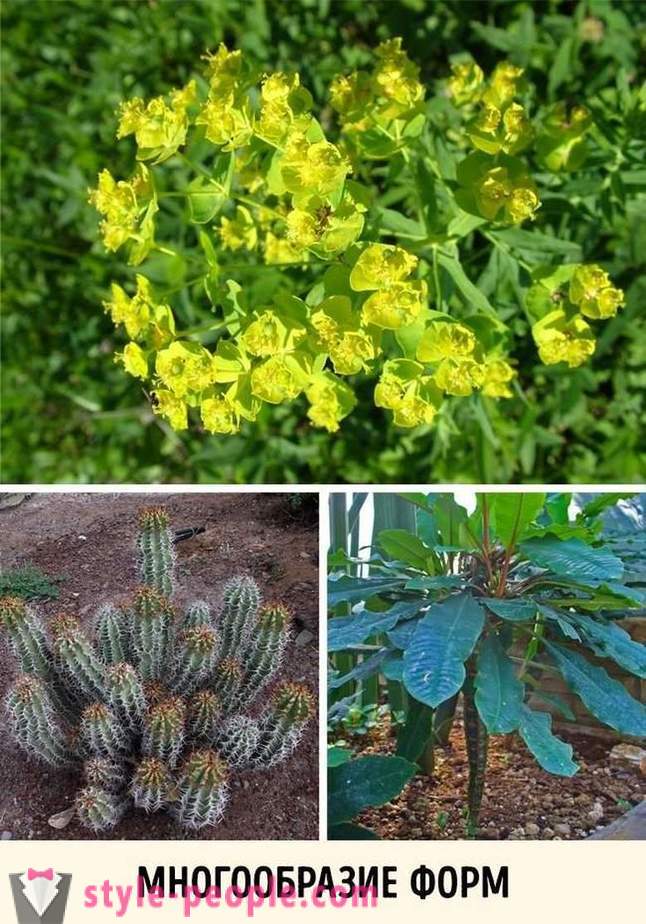
Where found: Everywhere. It can often be seen on the window sills, including in children's institutions.
By spurge refers huge number of species, they are often very different in appearance: some are like cacti, the other - on the flowers. Teach children not to touch unfamiliar plants, even if they are growing in pots.
What is dangerous: Juice leaves burns. Later joined by malaise, swelling and fever.
rhubarb
Rheum rhabarbarum
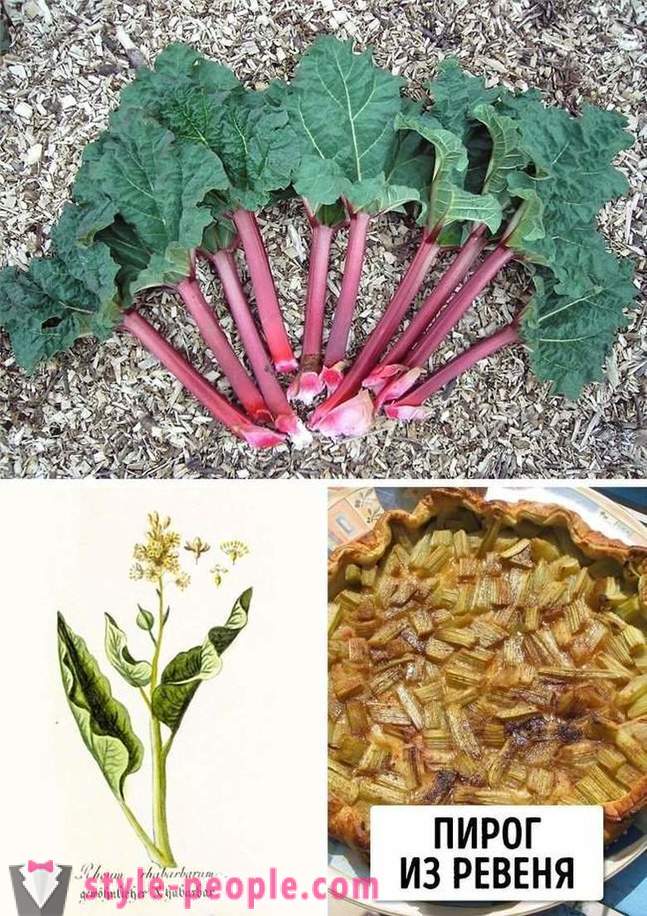
Where found: Cultivated in Europe, Russia and the United States.
In many countries, rhubarb make pies, salads and sauces. And many do not mind and just pohrustet stem.
What is dangerous: Not everyone knows, but there are leaves and roots of this plant can not be, because they contain an incredible amount of oxalic acid and its salts. They can cause burning in the eyes and mouth, kidney problems, vomiting and diarrhea.
Belladonna, or Krasavka
Atropa belladonna
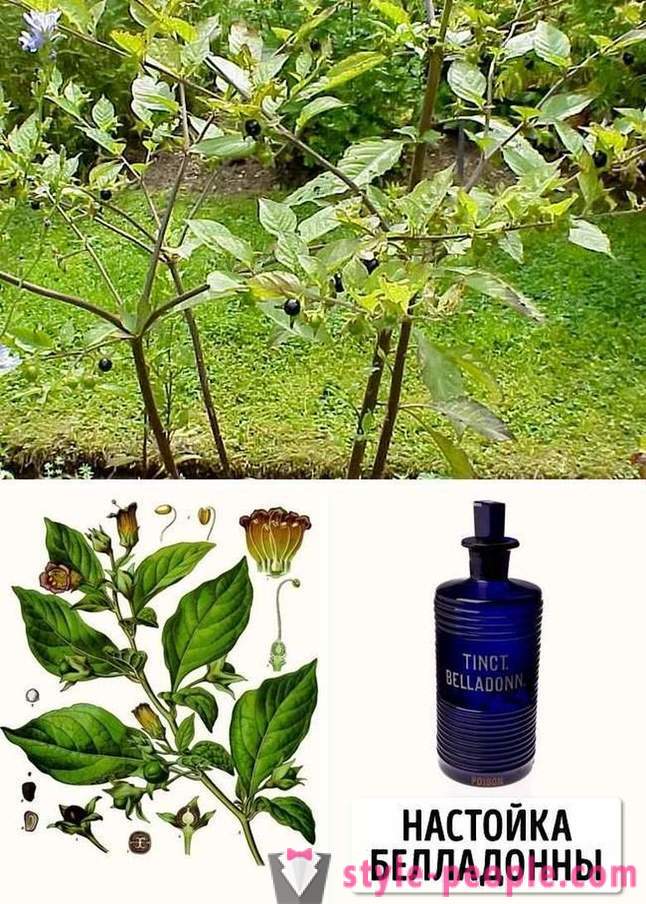
Where found: In North Africa, Europe, southern Russia, Asia Minor, in some areas of North America.
It looks like a shrub with black berries and pinkish flowers. It contains alkaloids atropine, which causes mydriasis. In the Middle Ages drops of belladonna dripped into the eyes to make the eyes look more attractive. Now similar drops are used for eye surgery.
The danger: In mild poisoning appear dryness and burning in the mouth, heart palpitations. At serious - complete disorientation, convulsions and sometimes death.
castor bean
ricinus communis

Where found: In the tropical, subtropical and temperate zones. It is grown as an ornamental plant because of an unusual kind, including in pots.
It is from castor make castor oil. But do not worry: when steaming all toxins are destroyed.
What is dangerous: It's probably the most dangerous plant in general. A highly toxic compounds - ricin and ricinine. Especially poisonous seeds - only 4-9 pieces cause death if they eat it. Smaller doses cause irreparable harm to health as ricin oragnizma destroys tissue.













































